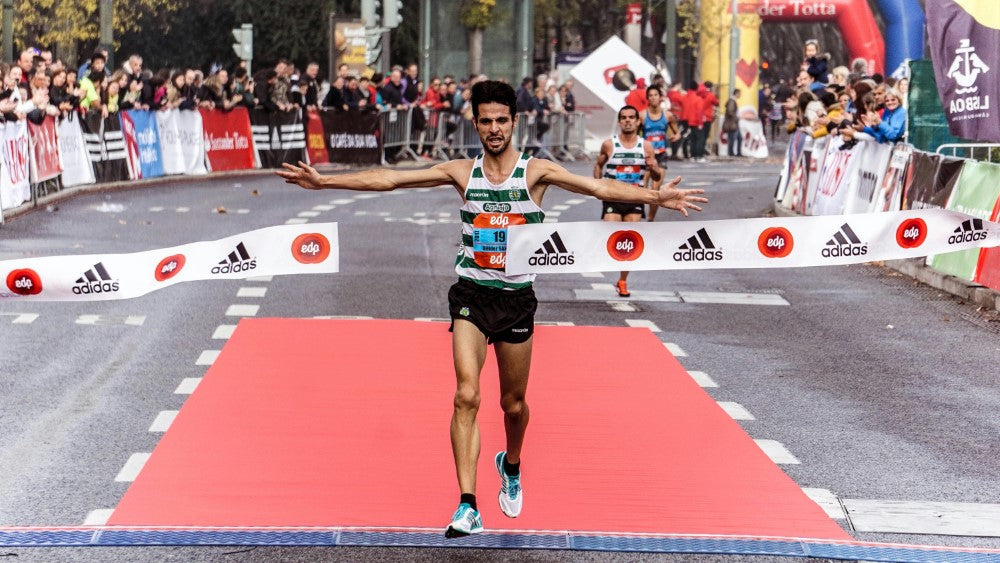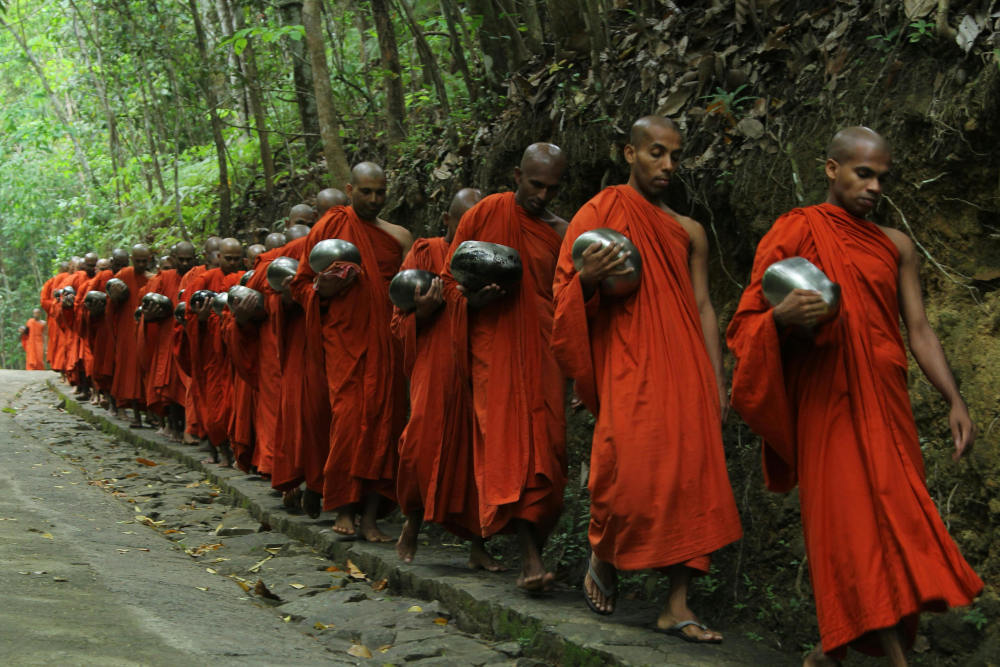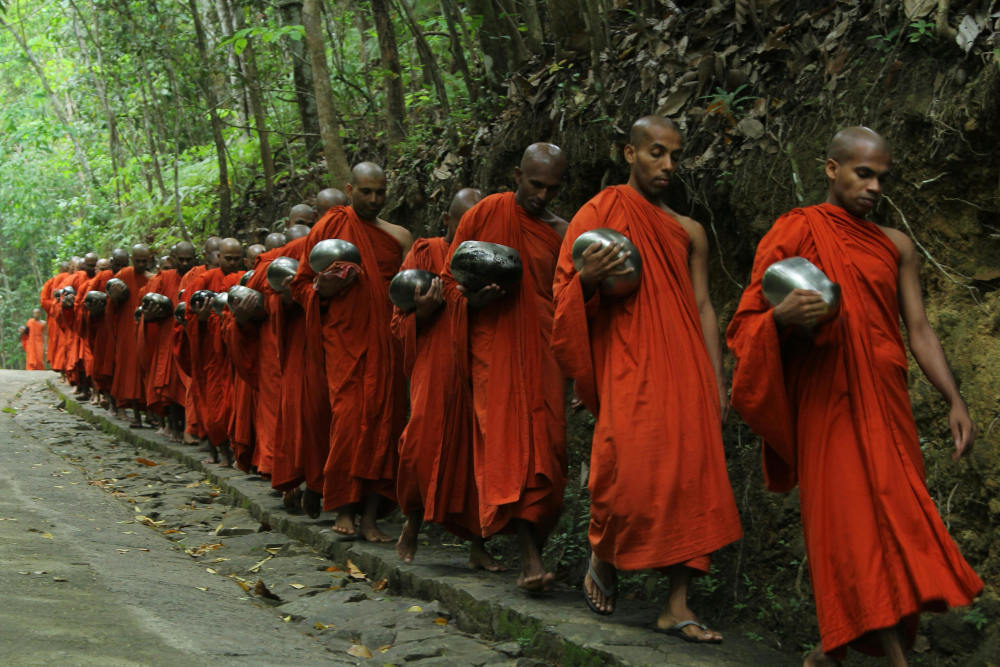
Running a marathon is an impressive feat, whether it's your first one, or you are a season regular. Training for a marathon takes incredible time, commitment, and endurance, making the day of the event all the more exciting.
Each marathon is different, with varying locations, weather conditions, and terrain. Regardless of the type and place, you want to do your best, whether it's getting to the finish line or beating your personal best.
What you choose to wear on the day can certainly help or hinder your performance. You want to choose items that are comfortable mile after mile without causing you to freeze, overheat, or cause unpleasant chafing.
Panaprium is independent and reader supported. If you buy something through our link, we may earn a commission. If you can, please support us on a monthly basis. It takes less than a minute to set up, and you will be making a big impact every single month. Thank you!
Sweats

Sweats have been a popular choice for marathons since they first were competed at. Many people feel too confined in leggings or compression shorts and feel more comfortable in sweats that are baggier. Sweats won’t cause chafing and can easily be worn over shorts or basewear for added warmth.
Compression Leggings

Many marathon runners opt for leggings, or compression leggings as they feel they help to boost their performance. When choosing leggings, consider a seamless pair that won’t cause chafing, and make sure they fit properly so they aren’t cutting off circulation or riding down.
Moisture Wicking

Regardless of what type of clothes you choose, the majority of marathoners wear moisture-wicking fabrics to help keep their clothes and themselves from being weighed down by moisture. Moisture-wicking clothes are also breathable and have a cooling effect so you don’t overheat at any point.
Discover more ways to stay cool here.
Cap or Bandana

A cap, such as a baseball cap or trucker’s hat will help keep the sun off your face and help protect you from sunstroke. Some runners sweat a lot underneath a hat and wear a bandana instead to help keep the sweat away from their forehead and face.
The Right Shoes

The right shoes for a marathon look different for each person. Some things to consider include what terrain you are running on. Running on level asphalt requires different shoes than cross-country running.
Also, consider how fast you are running and the level of support you need: lighter shoes are better for speed, but sturdier shoes are best for long runs.
Always make sure to run in your shoes a few times before the day to make sure they are the right fit and to prevent blisters.
Find your next pair of running shoes here.
The Right Socks

The right socks are different for every person and every shoe. Most runners opt for a quick dry sock that is not too thin or too thick to help prevent blisters. Some runners prefer compression socks up to their knees for added support and circulation.
Shorts or Capris

Shorts and capris are a popular choice for runners. Both come in a variety of styles from loose to compression and from short to long. Capris offers more coverage than shorts and won’t ride up. Shorts allow you to breathe more and are lightweight.
Try out a pair of organic bamboo shorts.
Running Underwear

Everything you wear for a race matters, including your underwear. Many runners prefer dry-fit underwear that won’t trap in sweat and prefer chafing. Some runners opt for shorts that have an inner liner meant to function as underwear instead.
Sports Bra

Sports bras are essential to provide you with the right amount of support for your long run. Choose one that is comfortable and seamless to prevent chafing. Many women wear just a sports bra for their tops, but it can also be layered under a tank top, shirt, or sweater.
Discover these sports bra brands.
Gloves and Ear Warmers

When you are running, especially in the cold, your extremities including your hands and ears are the most likely to get cold. Wearing a light pair of gloves will prevent your hands from freezing.
Many runners prefer ear warmers or a warm headband instead of a beanie. A beanie can trap in sweat and make you colder, wearing ear warmers will protect your ears without causing this effect.
Short Sleeve or Long Sleeve Shirt

A short-sleeved or long-sleeved shirt works great on its own or as a base layer. They also allow you to attach your number for the race to them. Choose light layers made from breathable fabric like polyester and nylon.
Wind Breaker Running Jacket

If the weather calls for rain or is windy, consider a lightweight jacket that will help keep the rain and wind off of you. Some also help prevent heat from escaping your core if you are concerned about getting cold.
Wear one of these jackets on your run.
Not Brand New

No matter what you choose to wear, make sure all items are not brand new and that you have trained in them at least once. This will help prevent any unpleasant surprises, and make sure your clothes will help you in the race and not hinder you.
Learn more about used clothes here.
Inexpensive Layers

Depending on the location and weather, you might start out running with more layers than you finish with. Lots of runners will layer with inexpensive, thrift, or old clothes that they don't mind leaving as they take them off as needed throughout the length of the course.
This includes an old sweater or coat, inexpensive mittens, and beanies or hats.
Learn more about thrifting here.
Running Belt or Vest

An easy way to store your essentials like a snack, electrolyte tablets, and hydration is with a running belt or vest. They are a lightweight option that won’t get in your way and won’t weigh you down like a traditional water bottle.
Some marathons prefer you to use the water they provide, so make sure to check the rules ahead of time.
Find more running clothes to try here.
Was this article helpful to you? Please tell us what you liked or didn't like in the comments below.
About the Author: Shelby Bonner
What We're Up Against
Multinational corporations overproducing cheap products in the poorest countries.
Huge factories with sweatshop-like conditions underpaying workers.
Media conglomerates promoting unethical, unsustainable products.
Bad actors encouraging overconsumption through oblivious behavior.
- - - -
Thankfully, we've got our supporters, including you.
Panaprium is funded by readers like you who want to join us in our mission to make the world entirely sustainable.
If you can, please support us on a monthly basis. It takes less than a minute to set up, and you will be making a big impact every single month. Thank you.































0 comments